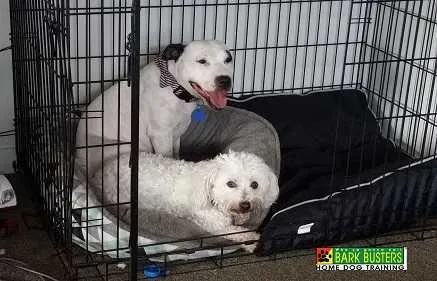How to Choose the Right Crate for your Dog

Crates provide more than just a place for your pet to stay when you're working on dog training or if you're travelling. The right crate provides security, comfort, and a place that your dog can truly call their own. Here's how to choose the right crate for your dog so they can enjoy their own space happily.
Size matters
Ideally, your dog's crate will be large enough for your pet to stand and turn in, but small enough to be cosy and comforting. If you're buying for a puppy, make sure you buy a crate large enough for it to "grow into" and can be partitioned when your pup is little so they won't toilet in it.
Consider the materials
Crates are typically made from soft material over a frame, wire, or solid plastic. Each material serves a purpose, though one may be better for your pet's needs. Plastic crates are solid and secure, offering an enclosed space where your dog will feel safe.
Wire crates are open, usually collapsible, and allow more air circulation. They can be covered with an old sheet or blanket to create a cosier feel, or uncovered to allow sunlight and cool breezes in.
Soft crates are often used for travel since they fold down and store away easily. They're easy to clean and come in a variety of sizes, just like wire and plastic crates do. Decide what your dog's lifestyle dictates as best--if you travel a lot, a soft, collapsible crate may be a good choice, but if you are looking for a solid, secure, stable "home" inside your home, plastic or wire may be better.
Using your crate the right way
Crates are great for keeping your puppy or dog confined and feeling safe overnight or during travel, but you shouldn't leave your pet in a crate for long periods of time. If you must leave your pet alone for more than four hours at a time, consider leaving the crate open and blocking off an entire room or even just part of one to give your dog room to stretch their legs.
Crates are great for potty training, too, but make sure you let your pup out to toilet. Learn when they will likely have to go and let them out at intervals appropriate for their age and metabolism. If your timing is off or the crate is too large, accidents may occur inside the crate, making it an unpleasant space for your pet to spend time.
Recent Articles
- Leash Training - How to Stop your Dog from Pulling on Walks
- Dog Aggression Training & Tips
- Halloween Safety Tips for Dog Owners
- Understanding and Training Dogs with Separation Anxiety
- Why Is My Dog Barking So Much? Understanding Excessive Barking and How To Help
- Dogs need education too!
- Winter woes? A dog-lovers guide to solving winter blues
- Natural Dog Behaviours
- Indoor Boredom Busters for Your Dog
- The Truth About Those Dog Myths
